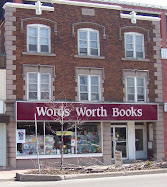
According to a friend of mine who knows more about the history of ideas than I ever will, there’s an increasing trend in design to focus on the very large and the very small. Architects want to build museums, galleries, airports, and huge glistening skyscrapers. We’re obsessed with the perfect MOMA approved lemon squeezer, the killer corkscrew, or the ultimate cheese grater. There are some obvious reasons for both of these trends. Star-chitects naturally want giant celebrations of their vision, and what designer would not want to think that her gadget was in every au courant kitchen drawer in the country? But these developments might have other meanings as well. When we walk into certain restaurants, coffee joints, cinemas, or other large chain retailers, we could be anywhere from Beijing to Balurghat to Baltimore. Does modern life, lived outside of space, conducted at the speed of light, leave us looking for comfort in branded buildings and perfect kitchen trinkets? Everything from the cell phone to the Internet has propelled us headlong into an existence in which physical distance means almost nothing. In the days when the only way to get from one place to another was by using what my father used to call Shanks’s Pony—your feet in other words—place meant so much more than it does now. Today, we may not always know where we are, and knowing might not even matter so much, but we can strive to surround ourselves with the familiar—the Golden Arches, the Green Coffee Angel or the big red Chapters logo. We take comfort in such known quantities to help us to cope with the jarring disorientation of being…kinda…nowhere.
But there’s something else that we humans do well, and that is to make ourselves into stories: we collect places and things into a curious amalgam that we use to make sense of our lives. For me, books and bookstores have always been a pivotal part of my story. I buy more books than I could possibly read. There are tippy stacks of books scattered throughout my house, some on the reading short-list, others purchased because I liked the way they looked, and others picked up against daunting odds that I will ever find the time to read them, just to acknowledge the desire to know. Even though I know I could never read all the books I own, I also know how each one of them connects with my story. Each book stands as a proxy for a little space-time episode in my life. I know where it came from and most often I can even remember what I was doing and how I felt when I bought it. In most cases, I can remember where I bought it. Each book is a little hedge against losing myself entirely. It’s a box full of stories and ideas, intangible things, but it is somewhere. It exists.
Now, I’ve written a book—my first. It’s a heady feeling to think that there are thousands of tiny hardcopies of my thoughts and ideas, each one fashioned as a real thing and many of them slipping into the hands of strangers. I’m finding it a very different way to think of what a book is and how it connects to my story—it’s like looking out from inside the mirror. The words I’ve written came together in an amazing collection of crazy places—my university office, forest trails, freezing winter beaches in Nova Scotia, long drives on the 401, and the dark, quiet corners of a little study under the stairs of an old house. When I close my eyes I can smell that perfect little oasis of stillness. I like to think of my story connecting with your story through that lump of paper you’re holding in your hands. My book—the physical thing itself—joins us together and anchors us both to some place. It puts us somewhere. It’s where we are.


No comments:
Post a Comment